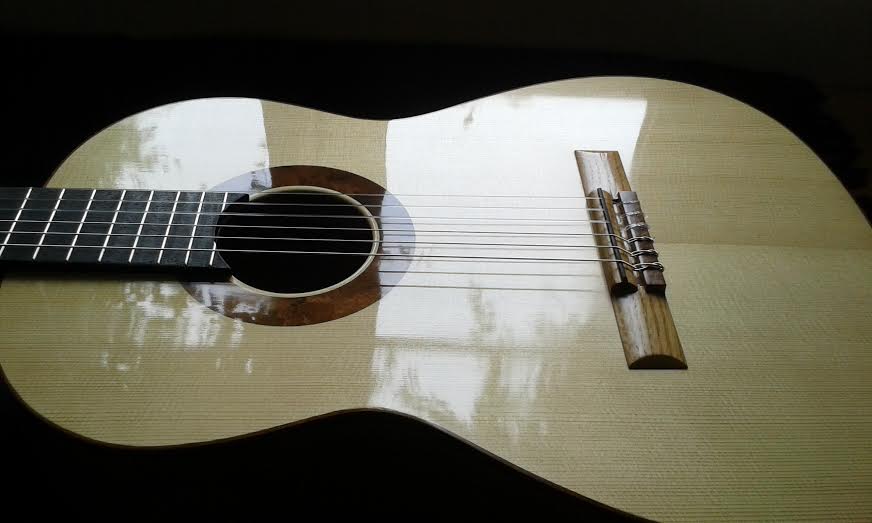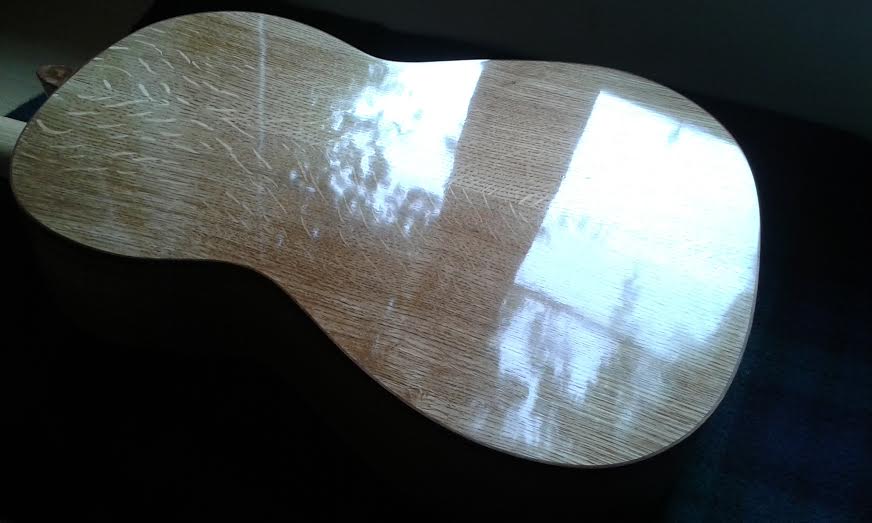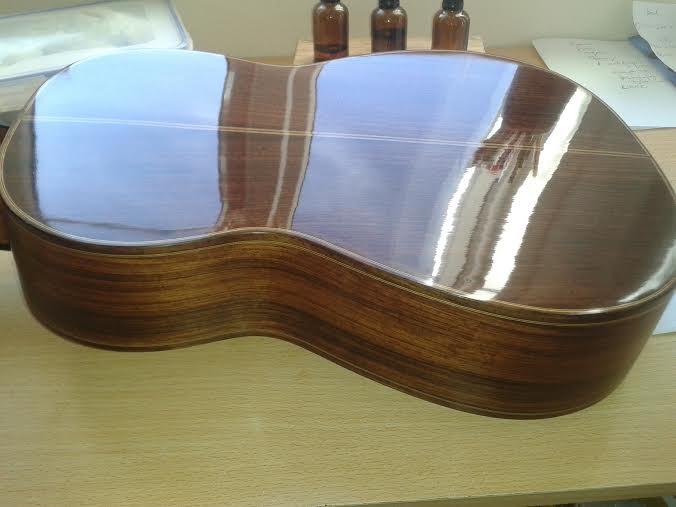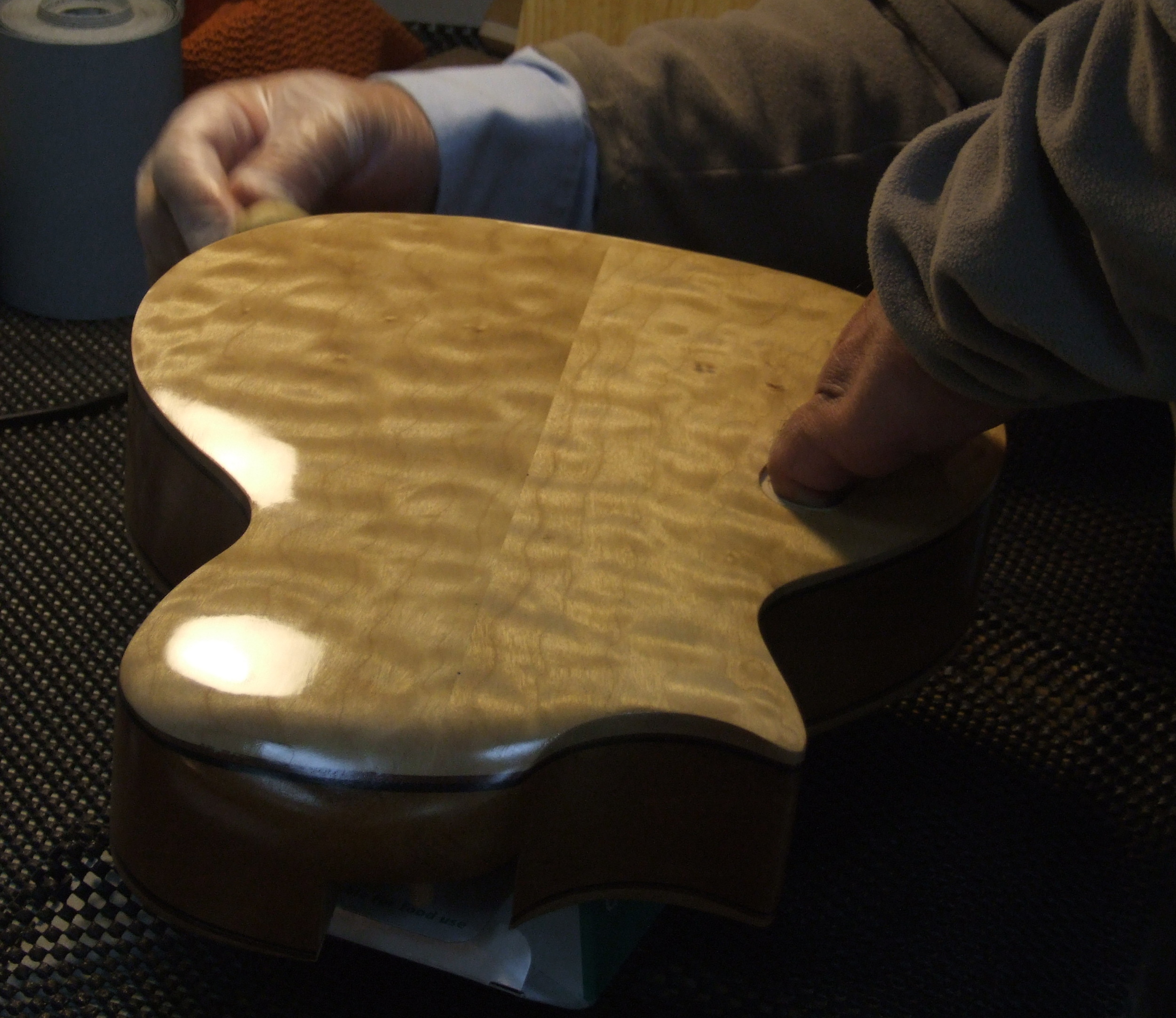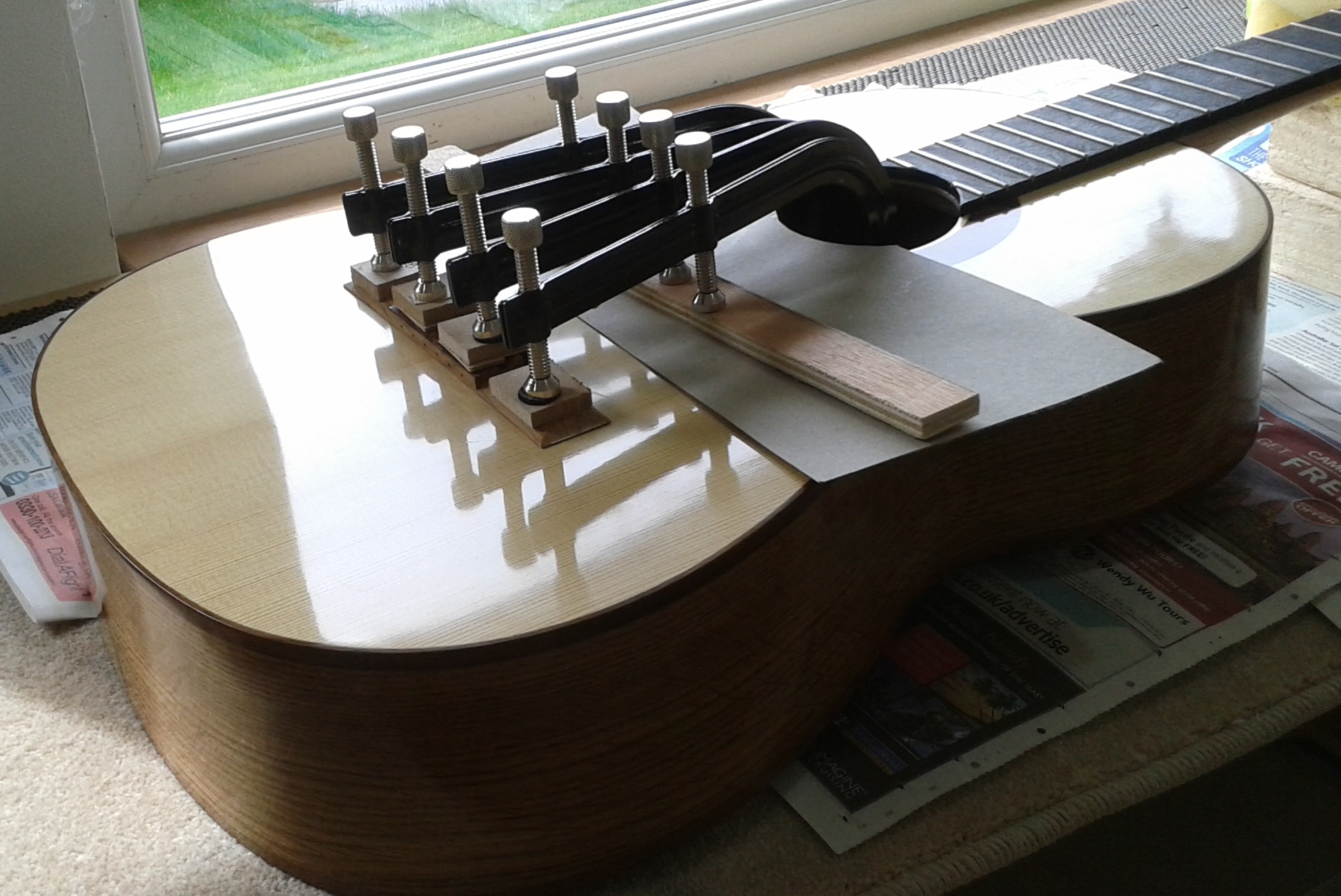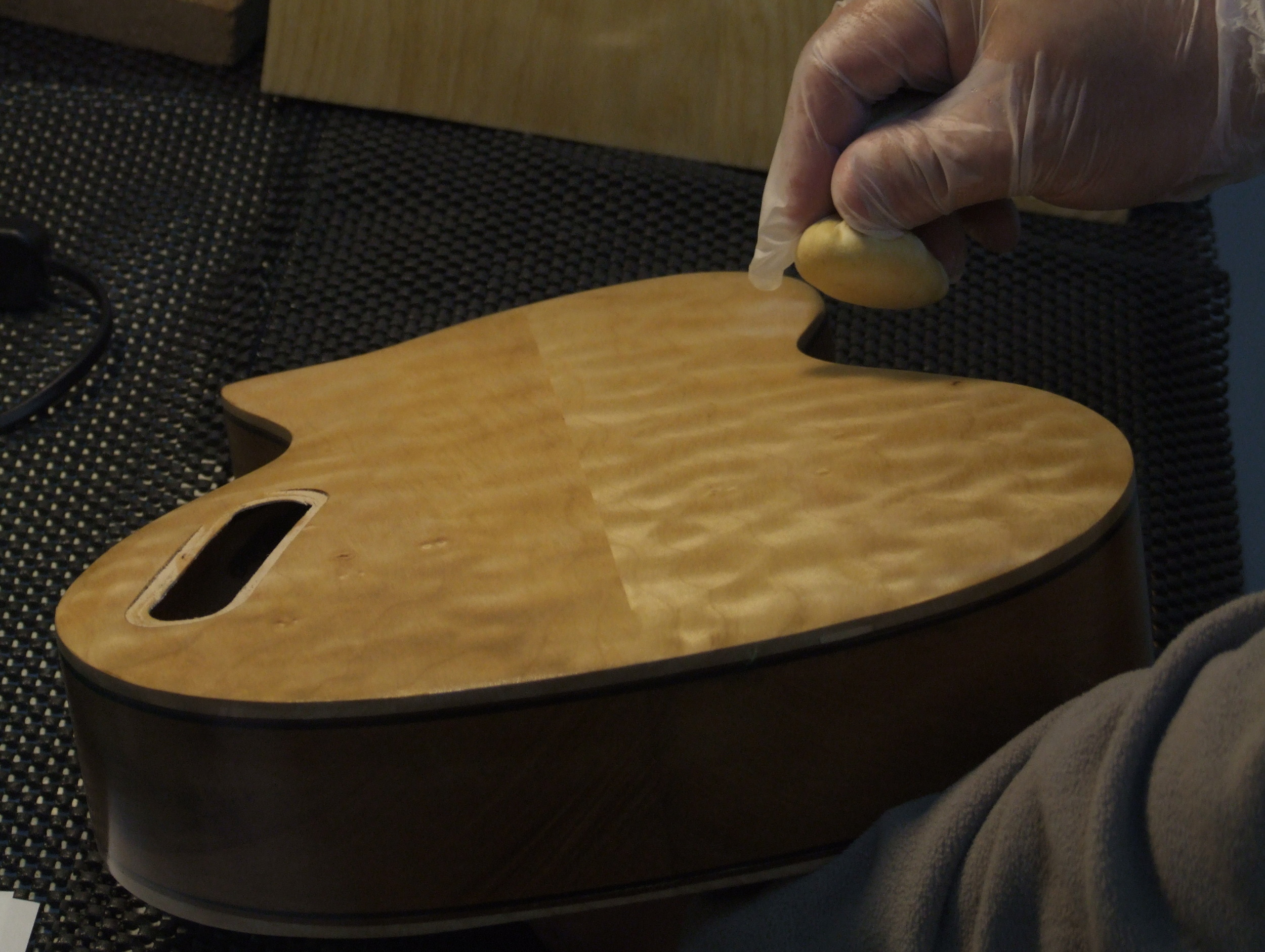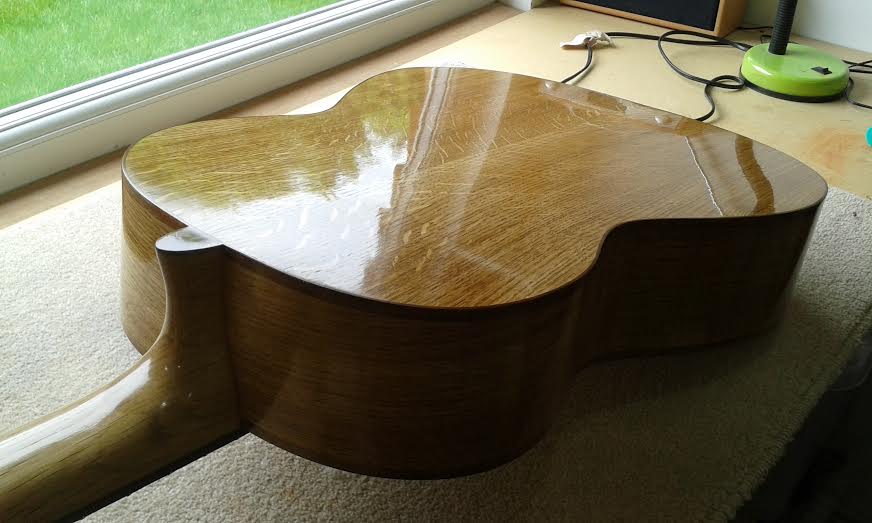Guitar Making Course with Roy Courtnall
French Polishing Guitars
"Thanks Roy, my customer was so happy with his guitar, so thanks for teaching me how to French polish. He said it is the best French polish he has ever seen and he has polished various bits furniture in the past. He even added some money on to the price when he wrote out the cheque! Thanks again for all you have done!"
(Karl from Bedfordshire).
French Polish is traditionally the preferred finish for top quality Spanish classical and flamenco guitars, but polishing guitars with shellac in the traditional way, is an extremely demanding branch of French Polishing; - it is more time-consuming than polishing furniture, not only because of the unusual shape of the instrument, with various difficult areas to reach like around the bridge, fingerboard and neck, but also because there is an expectation that the surface finish will be as perfect as humanly possible. The final result must be without blemish, so immense care has to be taken to start with absolutely smooth surfaces, free of any defects. A new guitar should have perfectly smooth, regular, pristine wooden surfaces, and the slightest imperfection in the polish will stand out immediately. (Old furniture, with its dents and irregularities, is much more forgiving.)
The current fashion with antique furniture is to go for a rather mellow, satin finish, without a high gloss. Even though much 19th century furniture would have been very shiny when new, we often prefer to retain the well-worn look of surfaces that have mellowed over time.
The modern classical guitar developed in Spain during the 19th century, and if you are fortunate enough to have an old guitar, you may wish to treat it in the same way as period furniture; to clean and polish it, but retain its history, patina and mellowness.
But if you are polishing a newly built guitar, you may want to finish it in the mirror gloss tradition current at the time the design originated in the 19th century. (It should be said that nowadays, many luthiers prefer a more natural look, to keep the shellac finish quite thin, with a matt or satin glow, and an open grain finish.)
But if you do want a full gloss finish, then you need to go through all the stages taught on our course (and described on the Students' Resources page). This will achieve a full gloss mirror finish.
